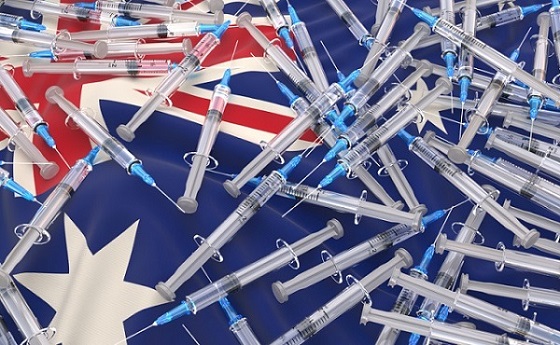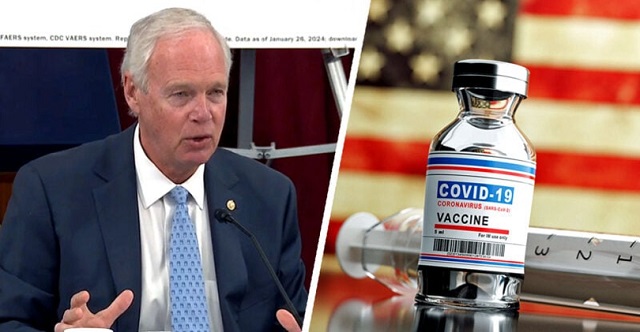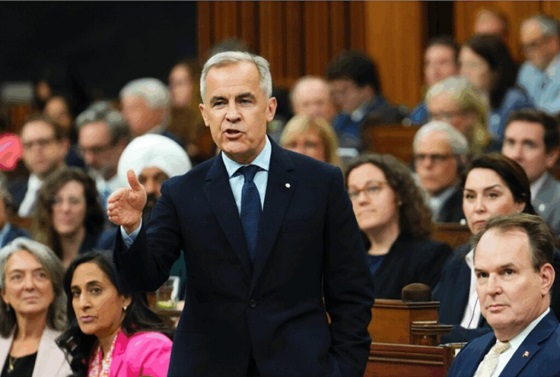COVID-19
Australian court rules COVID jab mandate for first responders violated Human Rights Act

From LifeSiteNews
By David James
Mining billionaire Clive Palmer, founder of the United Australia Party, funded the action and said afterwards that he was willing to back other class actions by affected workers. He called for the presidents and executives of the Queensland Police and Ambulance unions to “do the honourable thing and resign from their roles
In another blow to the legitimacy of Australian governments’ anti-COVID-19 measures, among the most severe in the world, a judge in the Queensland Supreme Court has ruled that the COVID shot mandates for police and ambulance staff were unlawful.
The judge, Glenn Martin, found that there was a breach under the Human Rights Act: specifically the right not to be subjected to non-consensual medical treatment. He ruled there was a failure “to give proper consideration to a human right relevant to the decision,” rendering the mandate unlawful.
The judge ordered that the police commissioner no longer take steps to enforce the mandates or continue any disciplinary proceedings. He ordered that the director general of Queensland Health also be restrained from any enforcement of the vaccine direction, and that no disciplinary proceedings could be taken against those applicants.
READ: South Australian court rules employers who mandated COVID jabs can be held liable for injuries
Although on the face of it the decision has potentially far reaching consequences for the many Australian workers who refused to comply with mandates, the finding was based on a technicality, rather than a matter of ethical or legal principle.
Health Minister Shannon Fentiman said the ruling was made “in relation to how the directives were made, not the directives themselves.” She said the judge found that limiting people’s human rights in having healthcare imposed upon them without consent was “justified because of the pandemic.”
It indicates that Australian judges continue to work on the basis that COVID-19 was a deadly pandemic, which justified suppressing individuals’ right to make decisions about their own health. Contrary to that assumption, the Australian Bureau of Statistics (ABS), which compiles its records from death certificates, found that 2020 and 2021 had the lowest level of deaths from respiratory diseases since records have been kept.
So where was the pandemic? The answer is in computer modelling that turned out to be totally wrong. An example of this irresponsible use of modelling, rather than actual evidence, was referenced in the case. The police service claimed that “modelling” indicated that Queensland Police Service (QPS) personnel would have over two million contacts with the community every year. The judge criticized this, noting that it was for 2019/20 and “did not provide any predictions of the effect of the pandemic on the QPS.” Queensland Police Commissioner Katarina Carroll resigned the day before the decision was handed down.
All Australian state governments relied on deeply flawed modelling, especially the former premier of Victoria, Daniel Andrews.
For the law to work properly the assumption that there was a pandemic in Australia needs to be exposed as incorrect. There was only a pandemic of testing, from which illogical or flawed conclusions were drawn. It triggered panic in the Australian community. For the first time in human history people were considered to have a disease, to be a “case,” when they were healthy. Problems include:
- The PCR test used to identify COVID “cases” was not suitable as a diagnostic tool, as the inventor Kary Mullis noted.
- Because the specifics of the Sars-CoV-2 virus were not available in the early stages due to Chinese reluctance to provide details, the PCR test was based on an old flu virus. The FDA admitted that the test was developed not with actual samples of COVID-19, but with what appears to be genetic material from a common cold virus. Tellingly, in 2019 the ABS recorded 4,124 deaths from flu. In 2021 it recorded only two.
- According to the Worldometer, 80 percent of people in Australia who tested positive to COVID-19 experienced no symptoms. This meant either that the test was flawed or their immune systems had dealt with it.
- Mortality from respiratory disease in the period when there was supposed to be a pandemic was unusually low. According to the ABS deaths from COVID-19 in 2020-21 were under 2,000 – far lower than the 4,124 in 2019 from flu.
- The epidemiological modelling was based on “cases,” following positive testing from the PCR or lateral flow tests. This resulted in an absurdly inflated picture of the risks.
Even if it is accepted that these were understandable mistakes, the fact remains that the Australian authorities got it completely wrong; that should have legal implications for the people who lost their livelihoods. Courts, after all, typically focus on evidence, not speculation, even when that guessing comes from complex computer modelling.
Mining billionaire Clive Palmer, founder of the United Australia Party, funded the action and said afterwards that he was willing to back other class actions by affected workers. He called for the presidents and executives of the Queensland Police and Ambulance unions to “do the honourable thing and resign from their roles in supporting the decisions to have officers vaccinate against their wishes.”
If there is to be widespread justice, however, it would seem to be necessary to go beyond just the wording of the vaccine mandate directives and expose how wrong the authorities were when they imposed savage restrictions on the Australian work force and community.
Until judges realise that their assumptions about the “pandemic” are wrong they will continue to put a false idea of the common good above respect for individual rights.
COVID-19
Senator Demands Docs After ‘Blockbuster’ FDA Memo Links Child Deaths To COVID Vaccine


From the Daily Caller News Foundation
By Emily Kopp
The letter, exclusively shared with the Daily Caller News Foundation, seeks more details about those deaths and the passive U.S. vaccine safety surveillance system and complacent Food and Drug Administration (FDA) bureaucracy under the Biden administration that delayed their reporting for years.
“Nobody wanted to admit that these things were causing death. This is absolutely a case of willful ignorance,” Johnson said in an interview with the DCNF.
As a nonprofit, we are dependent on the generosity of our readers.
Please consider making a small donation of any amount here.
Thank you!
The letter requests from the Department of Health and Human Services (HHS) “all records referring or relating to the review of the 96 reports of death following a COVID-19 vaccine … including but not limited to, any memorandum or report created following that review and the data underlying the reports.”
“I am grateful that we now have individuals at our federal health agencies who care about vaccine safety and efficacy. I am, however, disappointed that despite having subpoenaed HHS for the type of data and information described in Dr. Prasad’s memo, it does not appear to have been provided to my office,” the letter reads.
HHS did not immediately respond to a request for comment.
“This is a profound revelation. For the first time, the US FDA will acknowledge that COVID-19 vaccines have killed American children. Healthy young children who faced tremendously low risk of death were coerced, at the behest of the Biden administration, via school and work mandates, to receive a vaccine that could result in death. In many cases, such mandates were harmful. It is difficult to read cases where kids aged 7 to 16 may be dead as a result of covid vaccines,” Prasad wrote. “There is no doubt that without this FDA commissioner [Marty Makary], we would not have performed this investigation and identified this safety concern. This fact also demands serious introspection and reform.”
“One reason I’m writing this letter is that this memo needs much greater attention. This should be a blockbuster,” the Wisconsin senator told the DCNF.
Johnson, who has investigated the issue of COVID vaccine-linked adverse events since June 2021, also seeks more clarity about why FDA only examined a fraction of total reports to the Vaccine Adverse Event Reporting System (VAERS). He noted that the 96 deaths scrutinized by FDA staff in its investigation represents a sliver of the raw VAERS reports of 9,299 deaths worldwide within two days of vaccination.
Distinguishing which VAERS reports indicate genuine fatal side effects and which represent mere coincidences requires autopsy reports, which regulators and physicians often do not request because of a ideological reluctance to acknowledge that vaccines can carry risks, Johnson told the DCNF. Johnson said he has spoken to families who suspected a vaccine injury but struggled to obtain autopsies.
“With some of these officials at federal health agencies and within the medical establishment, vaccines are religion. The do not want to muddy the water with facts,” he said.
Johnson’s letter notes that Prasad acknowledged a culture at FDA “where vaccines are exculpated rather than indicted in cases of ambiguity,” and that the true number of deaths is likely higher.
Johnson has as chair of the Senate Permanent Subcommittee on Investigations investigated the Biden administration’s headlong expansion of COVID vaccines and booster shots to healthy young adults and children.
His committee uncovered internal federal documents showing the Centers for Disease Control and Prevention never updated its vaccine surveillance tool “V-Safe” to include cardiac symptoms, despite naming myocarditis as a potential adverse event by October 2020, per a May report. The investigation also found that top officials at FDA obstructed a warning to pediatricians and other providers about the risk of myocarditis after the May 2021 authorization of the Pfizer vaccine for 12 to 15-year-olds, months after Israeli health officials first detected the safety signal in February 2021.
Johnson’s letter highlights missing safety studies that the drugmakers never conducted.
Under the Biden administration, the FDA waived the responsibility of the drugmakers to conduct post-market studies that they had pledged to regulators, scientific advisors on the FDA Vaccines and Related Products Advisory Committee, and the public that they would complete. These uncompleted studies include promised research into subclinical myocarditis, undocumented rates of heart inflammation without obvious symptoms, Prasad’s memo states.
Johnson’s letter reveals the committee has not received any records from HHS about the liability shield for COVID-19 vaccines.
A public health media personality reported on Dec. 11 that FDA staff had downgraded the certainty with which it can attribute some the deaths to the vaccine in the weeks since Prasad received their top line results — echoing prior leaks from career officials aimed at undermining FDA’s new bosses.
Center for Drug Evaluation and Research Acting Director Tracy Beth Hoeg first concluded in a separate analysis that there were in fact deaths in children in the summer, but career staff leaked the results to reporters who “portrayed the incident as Dr. Hoeg attempting to create a false fear regarding vaccines” soon after, per Prasad’s memo.
Johnson’s letter seeks documentation of Hoeg’s meeting, including “a list of all attendees.”
COVID-19
China Retaliates Against Missouri With $50 Billion Lawsuit In Escalating Covid Battle


From the Daily Caller News Foundation
China is escalating its legal fight with Missouri after the state secured a massive court victory earlier this year over Beijing’s role in the COVID-19 pandemic, according to the state attorney general’s office.
Missouri Attorney General Catherine Hanaway announced Tuesday that the People’s Government of Wuhan Municipality, the Chinese Academy of Sciences and the Wuhan Institute of Virology have filed a $50 billion lawsuit against the state, claiming Missouri poses an “economic and reputational threat” to the People’s Republic of China (PRC). The suit comes as Missouri moves to seize Chinese-owned assets to collect on a historic federal court judgment the state won in March.
Missouri first sued China in 2020, seeking $25 billion in damages “for causing and exacerbating the COVID-19 pandemic” and for hoarding critical medical supplies while the virus spread, according to the state attorney general’s office. China and several affiliated entities were ordered to pay Missouri roughly $24.49 billion, plus post-judgment interest. Senior U.S. District Judge Stephen Limbaugh ruled that China and the other defendants “failed to appear or otherwise answer after being properly served,” resulting in the default judgment.
As a nonprofit, we are dependent on the generosity of our readers.
Please consider making a small donation of any amount here.
Thank you!
Missouri maintained that China was attempting to shield itself from legal consequences by relying on proxy organizations to speak on its behalf — an accusation Beijing now disputes in its own lawsuit against the state.
In its lawsuit, China alleges that Missouri’s actions have had “negative effects on the soft power” of Wuhan and have “belittled the social evaluation” as well as adversely affected the “productivity and commercialization of scientific and technological achievements” of the Chinese Academy of Sciences and the Wuhan Institute of Virology. The filing further alleges that Missouri’s “vexatious litigation” has “defamed Plaintiffs’ reputation, resulting in huge economic losses of the Plaintiffs, and deeply endangering sovereignty, security and development interests of China.”
The suit names the state of Missouri, Republican Missouri Sen. Eric Schmitt and the former Missouri Attorney General Andrew Bailey as the defendants.
China’s lawsuit demands the defendants “issue public apologies on New York Times, CNN, Wall Street Journal, Washington Post, YouTube and other American media or internet platforms, and People’s Daily, Xinhuanet and other Chinese media or internet platforms.”
Hanaway rejected the demand and said the state remains focused on enforcing the federal judgment.
“I find it extremely telling that the Chinese blame our great state for ‘belittling the social evaluation’ of The Wuhan Institute of Virology. This lawsuit is a stalling tactic and tells me that we have been on the right side of this issue all along,” Hanaway said in a statement. “We stand undeterred in our mission to collect on our $24 billion judgment that was lawfully handed down in federal court.”
Schmitt described China’s suit as “frivolous lawfare, attempting to absolve themselves of all wrongdoing in the early days of the pandemic.”
“This is their way of distracting from what the world already knows, China has blood on its hands. China lied about the origins of COVID virus, they tried to cover it up, and they upended the world by creating a global pandemic that resulted in immense human loss,” Schmitt added.
Missouri, Hanaway said, is continuing efforts to obtain certification that would allow the state to seize Chinese-owned assets, including real estate, financial interests, and other holdings tied to the defendants.
-

 International1 day ago
International1 day agoBondi Beach Shows Why Self-Defense Is a Vital Right
-

 Business2 days ago
Business2 days agoOttawa Pretends To Pivot But Keeps Spending Like Trudeau
-

 Crime1 day ago
Crime1 day agoBondi Beach Survivor Says Cops Prevented Her From Fighting Back Against Terrorists
-

 Automotive1 day ago
Automotive1 day agoFord’s EV Fiasco Fallout Hits Hard
-

 Energy2 days ago
Energy2 days agoLiberals Twisted Themselves Into Pretzels Over Their Own Pipeline MOU
-

 Censorship Industrial Complex2 days ago
Censorship Industrial Complex2 days agoHow Wikipedia Got Captured: Leftist Editors & Foreign Influence On Internet’s Biggest Source of Info
-

 Crime1 day ago
Crime1 day agoThe Uncomfortable Demographics of Islamist Bloodshed—and Why “Islamophobia” Deflection Increases the Threat
-

 Frontier Centre for Public Policy15 hours ago
Frontier Centre for Public Policy15 hours agoCanada Lets Child-Porn Offenders Off Easy While Targeting Bible Believers






